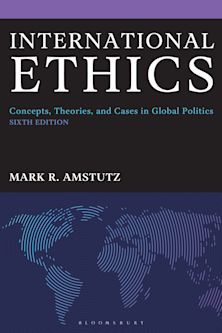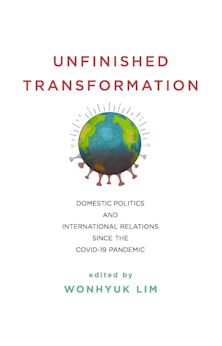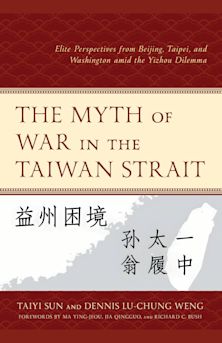- Home
- ACADEMIC
- Politics & International Relations
- Introduction to International Relations
- The New Great Power Coalition
The New Great Power Coalition
Richard N. Rosecrance (Author) , Alan Alexandroff (Contributor) , Gitty M. Amini (Contributor) , Richard Baum (Contributor) , Jennifer Kibbe (Contributor) , Deepak Lal (Contributor) , Deborah Larson (Contributor) , Greg Rasmussen (Contributor) , Joel Scanlon (Contributor) , Alexei Shevchenko (Contributor) , Steven L. Spiegel (Contributor) , Arthur A. Stein (Contributor) , Kristen P. Williams (Contributor)
The New Great Power Coalition
Richard N. Rosecrance (Author) , Alan Alexandroff (Contributor) , Gitty M. Amini (Contributor) , Richard Baum (Contributor) , Jennifer Kibbe (Contributor) , Deepak Lal (Contributor) , Deborah Larson (Contributor) , Greg Rasmussen (Contributor) , Joel Scanlon (Contributor) , Alexei Shevchenko (Contributor) , Steven L. Spiegel (Contributor) , Arthur A. Stein (Contributor) , Kristen P. Williams (Contributor)
This product is usually dispatched within 2-4 weeks
- Delivery and returns info
-
Flat rate of $10.00 for shipping anywhere in Australia
You must sign in to add this item to your wishlist. Please sign in or create an account
Description
The Great Power coalition of the early 19th century succeeded in keeping the peace among the major states of England, France, Prussia, Russia, and Austria. For the last century and a half, however, no truly encompassing coalition has emerged, and in its absence the 20th century was plagued by world wars and peripheral conflicts.
Only now, at the outset of the 21st century, is a new Great Power coalition possible. This book examines the prospect of a Great Power coalition that would be sustained by the development of "overlapping international clubs." The new set of Great Powers-the United States, Japan, the European Union, China, and Russia-can be increasingly bound together through a combination of status and economic incentives, international norms and regimes, and the emulation of national and regional "best practices."
The construction of such a coalition presents special problems and opportunities for the United States. In the years ahead, America will need to adjust its policies to bring China and Russia into membership of such a group or see them progressively adopt recalcitrant and antagonistic attitudes toward world affairs.
Table of Contents
Part 1 Influence Patterns: Country Case Studies
Chapter 1 Introduction
Part 2 International Organizations and Regimes
Chapter 2 Failures to Influence the Soviets: The Marshall Plan and Détente
Part 3 The Inculcation of New Norms
Chapter 3 Mikhail Gorbachev and the Role of Emulation and Status Incentives
Chapter 4 China and the Forces of Globalization
Part 4 Applications: What Can the United States Do?
Chapter 5 North Korea and Vietnam
Chapter 6 The Failure to Influence Iraq
Chapter 7 Iran: The Failure of Economic Incentives and Disincentives
Chapter 8 The Influence of the European Union
Chapter 9 Non-Proliferation Regimes
Chapter 10 Great Power Concerts in Historical Perspective
Chapter 11 The Theory of Overlapping Clubs
Chapter 12 The Development and Spread of Economic Norms and Incentives
Chapter 13 Constrained Sovereignty: The Growth of International Instrusiveness
Chapter 14 Emulation in International History
Chapter 15 Emulation in the Middle East
Chapter 16 Bringing Russia into the Club
Chapter 17 Bringing China In: A Cautionary Note
Chapter 18 China and the World Trade Organization
Chapter 19 Conclusion
Part 25 Influence Patterns: Country Case Studies
Chapter 26 Failures to Influence the Soviets: The Marshall Plan and Détente
Chapter 27 Mikhail Gorbachev and the Role of Emulation and Status Incentives
Chapter 28 China and the Forces of Globalization
Chapter 29 North Korea and Vietnam
Chapter 30 The Failure to Influence Iraq
Chapter 31 Iran: The Failure of Economic Incentives and Disincentives
Part 32 International Organizations and Regimes
Chapter 33 The Influence of the European Union
Chapter 34 Non-Proliferation Regimes
Chapter 35 Great Power Concerts in Historical Perspective
Chapter 36 The Theory of Overlapping Clubs
Part 37 The Inculcation of New Norms
Chapter 38 The Development and Spread of Economic Norms and Incentives
Chapter 39 Constrained Sovereignty: The Growth of International Instrusiveness
Chapter 40 Emulation in International History
Chapter 41 Emulation in the Middle East
Part 42 Applications: What Can the US Do?
Chapter 43 Bringing Russia into the Club
Chapter 44 Will China Join an Encompassing Coalition with other Great Powers?
Chapter 45 China and the World Trade Organization
Chapter 46 Conclusion
Product details
| Published | 27 Nov 2001 |
|---|---|
| Format | Paperback |
| Edition | 1st |
| Extent | 384 |
| ISBN | 9780742510098 |
| Imprint | Rowman & Littlefield Publishers |
| Dimensions | 227 x 147 mm |
| Publisher | Bloomsbury Publishing |



































